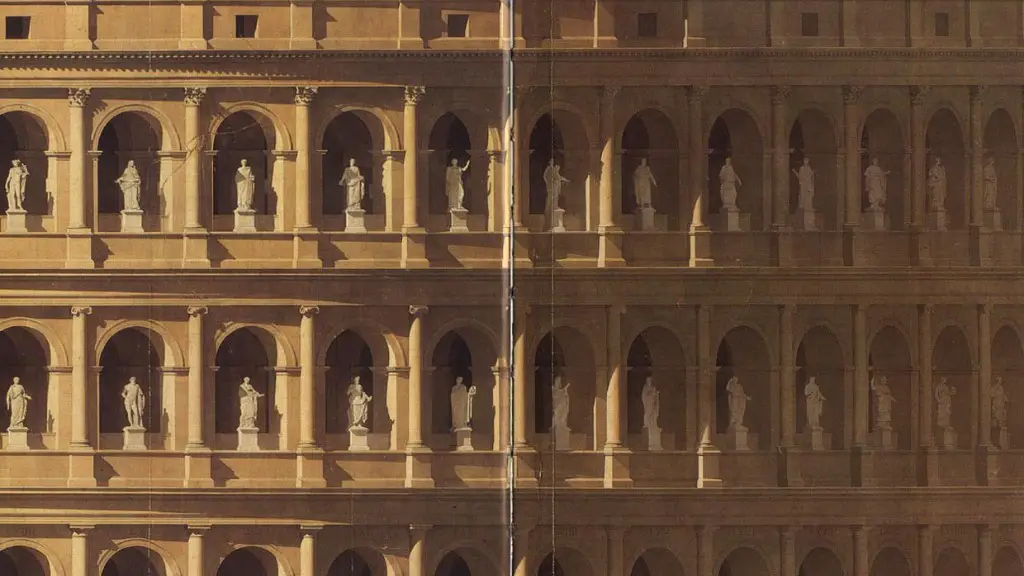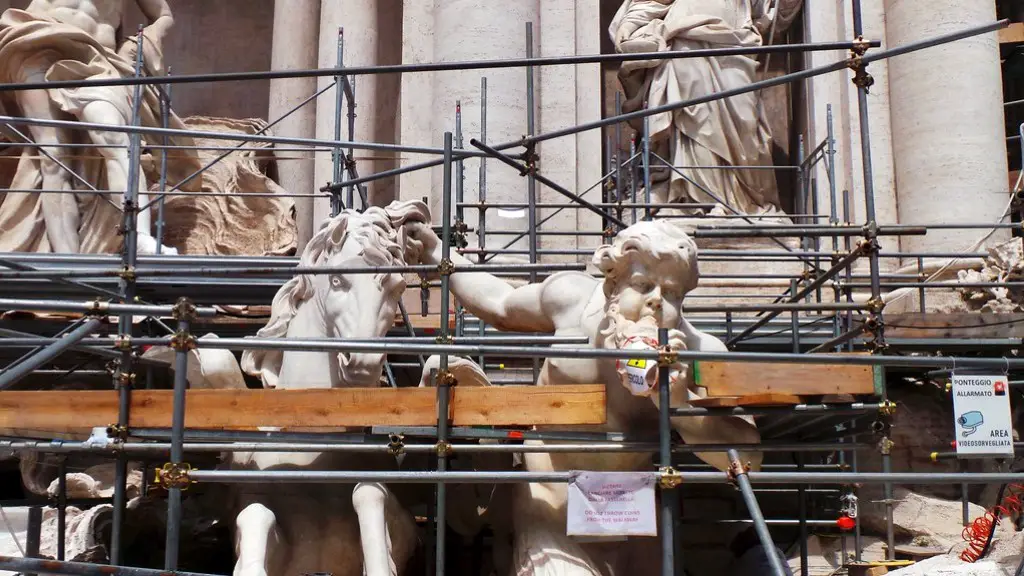In Ancient Rome
Slave ownership was embedded into the fabric of ancient Rome. Slaves were present in every aspect of Roman life and provided a useful source of labor for the Roman Empire. The use of slaves allowed for an extended period of development and growth of Roman society, however, it also created implications that greatly impacted Rome in a negative way.
Prior to the Second Punic War, the majority of slaves in Rome were prisoners of war taken by the Roman armies, but once the conflict was over, slave labour became more prominent. Slaves were officially recognized as property in the Twelve Tables as laws pertaining to slaves were established. As a result of this, slaves in Rome had virtually no rights.
By the end of the Republic, slavery accounted for roughly 30-35% of the total population. Slave labor was used in a variety of ways, from trades such as pottery and weaving to manual labour in the fields and the construction of new buildings. Through the exercise of human ownership, wealthy citizens could put the unpaid labor of slaves to their own benefit.
Not all slaves in ancient Rome belonged to citizens, as some were owned by temples, the state or individual institutions. The state-owned slave labour in particular proved to be beneficial in expanding the Roman Empire. Newly acquired slaves were tasked with building roads, cities and other infrastructure, while providing support and services to the citizens.
Opposition to slavery and its surrounding ideas first began to manifest during the reign of Constantine. Christian and philosophical objections to slavery gradually grew and by the sixth century, slaves were given their freedom, completely abolishing slavery in the Roman world.
Outside Rome
Slavery was not only present within Rome, but the countries and provinces outside of it as well. Ancient Rome had a direct effect on many countries outside its borders and slavery, along with other Roman practices, was often imposed on these territories, both in the form of slaves taken from war and in the form of officially recognized systems.
The Iberian Peninsula, which included Northern Spain and Portugal, as well as parts of modern day France, Austria, and Turkey all had histories of slavery within them, due to their inclusion in Roman provinces. The most prominent slave population, however, resided in Africa. Roman control of the Egyptian and Libyan provinces enabled them to obtain a great number of slaves from there, creating a diverse slave population throughout the empire.
In addition to this, the Roman practice of raiding other nations to acquire slaves spread to many other parts of the world, with notable cases of this occurring in Germania, Britain and Gaul. The widespread nature of slavery in Roman provinces enabled the Empire to quickly expand its territories and build its population.
Slavery in ancient Rome not only impacted those within its control but also had its effects on those outside it. Though it provided a source of labor and enabled the Empire to expand, it also caused great suffering to those who were subjected to its cruelties.
Impact
The impact of slavery in ancient Rome has been widely debated over the years. On one hand, slavery enabled Rome to develop and expand, providing numerous benefits to citizens. It also enabled them to reduce their reliance on other unreliable sources of labour, such as the free mobiles. On the other hand, it caused great suffering to those who were enslaved and the institution of slavery had an enormous impact on the Roman Empire.
From a moral perspective, slavery was seen as wrong by some and subject to a variety of criticisms. Scholars have argued that its effects on the growth of the population and the benefiting of certain citizens of Rome can be seen as evidence of its negative impact. In addition to this, its effects on several countries in Europe, Africa and Asia, as well as its implications on the labour and trades of those regions are still felt today.
Slavery in ancient Rome remains a controversial topic and its impact is still being debated by scholars. Regardless of where one stands on this issue, it is undeniable that its presence has left an enduring legacy on the world we live in today. From the point of view of both its benefits and its criticisms, slavery will remain a major part of ancient Roman history.
Confrontation
Slavery in Ancient Rome was deeply entrenched in the fabric of society, with many citizens directly benefiting from the unpaid labor that it provided. While certain legal and philosophical objections to it arose throughout the Empire’s history, the people who had to bear the brunt of the institution tended to be the slaves. Movement towards a more progressive outlook was evident in many cases, with some slave owners actively advocating in favor of their slaves.
The manumission of a slave requires the active choice of the owner to free them, and this process was a frequent topic of discussion among slave owners and philosophers. Some citizens, such as Marcus Anicius, a Roman Senator who owned sixteen slaves, supported their liberties, while others, such as Lucius Cornelius Sulla, actively opposed their rights, with Sulla even passing laws that prevented slaves from freely choosing their owners.
This confrontation between pro- and anti-slavery advocates formed the basis for the eventual outcome of the debate, with the majority of advocates for emancipation eventually making progress. Certain philosophers and Christian theologians, such as Ambrose and Chrysostom began to argue for greater consideration to be given to slaves and, with gradually increasing support, this ultimately led to the abolition of slavery in Ancient Rome.
Legacy
The legacy of slavery in Ancient Rome manifests in a variety of ways. Many of the societal norms that we take for granted today, such as the idea of free labour and the right to own property, have their roots in Roman law. The legacy of slavery can also be traced in some of the issues that are still present in modern societies, such as the discussion on equal rights and the consequences of colonial policies.
The prevalence of slavery in Ancient Rome also reflects in the language that is still prevalent today. Certain words, such as ‘servant’ and ‘slave’ still bear the scars of this part of Roman history, and many people are unaware that they have roots that predate the Roman Empire.
Though slavery in Ancient Rome was officially abolished, its effects can still be felt in the present day. Its implications, both positive and negative, are still visible in a variety of ways, and its lasting impact is a testament to its significance in the history of the Roman Empire.
Opposition
The abolition of slavery in Ancient Rome took place due to the combined efforts of slaves, abolitionists and philosophers. Slaves were the primary force in this movement, challenging the oppressive regimes of their owners and creating a greater space for themselves within the empire.
Though their progress was often met with resistance, it was through their efforts that the opponents of slavery began to gain traction. The philosophers and Christian theologians were influential in creating an environment in which slaves could advocate for themselves without fear of retribution. Through the combined efforts of these groups, the movement to abolish slavery in Ancient Rome began to gain steam and ultimately achieved great successes.
The opposition to slavery in Ancient Rome did not begin or end with the abolition of the institution, as opposition in the form of socio-economic and cultural criticism continued beyond that point. Opponents of slavery also faced criticism from supporters of the institution, who argued that slavery was necessary in order to keep the Roman Empire in power. Regardless of the opposition faced, activists of the period continue to have a lasting impace on modern society.
In Conclusion
Ancient Rome relied heavily on its large slave population, which grew through raids and military campaigns. They were a cheap source of labor and their contributions allowed the Empire to expand and grow. However, this progress also had its costs, as the lives of these slaves were often subject to cruelty and oppression.
Although slavery was eventually abolished in Rome, its effects were long-lasting. Its implications are evident in the language and customs of many countries today and its impact on world history is undeniable. The legacy of Ancient Rome’s slavery is still visible in the present day, making its discussion remain relevant.





